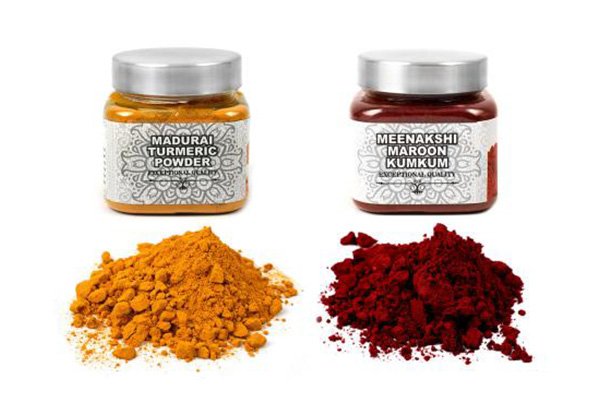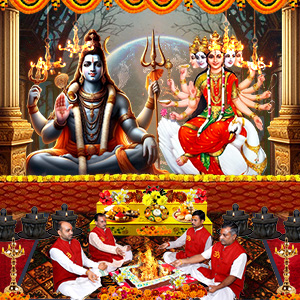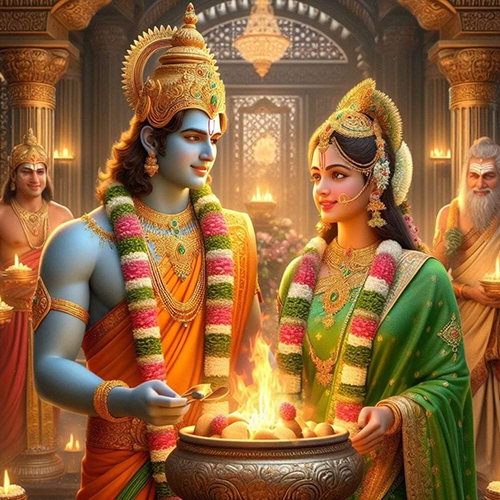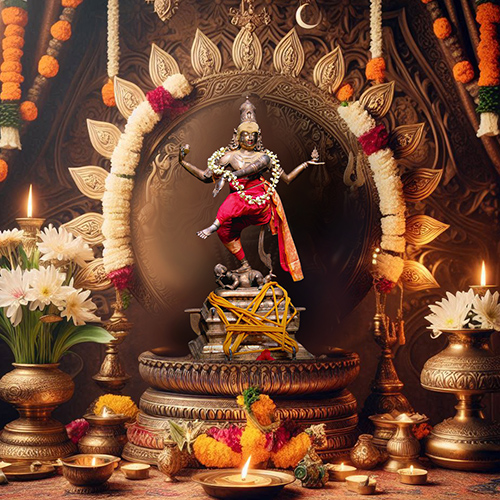.jpg)
Bhai Dooj is a celebrated Hindu festival that beautifully marks the special relationship shared between siblings, particularly brothers and sisters. The name is derived from the words 'Bhai,' which signifies 'brother,' and 'Dooj,' which represents 'the second day after the new moon'. The festival is joyously observed on the second day of the Shukla Paksha of Kartika, which falls in the vibrant month of Vikram Samvat Hindu calendar. It is commonly celebrated during the Diwali or Tihar festival and Holi festival.
About Bhai Dooj Celebration
One of the most precious bonds of love is the bond between siblings. We all have grown up learning how to share and care for our siblings and how to always stand strong by each other and protect each other during difficult times. Also, through our growing years, we have been listening to stories about sibling bonding through books and through religious scriptures which mentioned the true affection and bonding between the Gods and their siblings. The day on which this bond of affection, care and love is celebrated is called ‘Bhai Dooj’.
On this day, brothers visit their sisters to ensure they are well, as a sign of protection and a sweet-tempered bond between them. This caring tradition is indeed a beautiful celebration that marks the end of the
Diwali festival
.
What Is Bhai Dooj (Meaning)?

The name is derived from the words 'Bhai,' which signifies 'brother,' and 'Dooj,' which represents 'the second day after the new moon'. On this day, brothers visit their sisters to ensure they are doing well. In return, the sisters welcome their brothers by applying vermillion/tilak on their brother's forehead and pray for their well-being and long life, offering gifts to them. This traditional exchange of love and gifts rekindles the relationship between them.
The Bhai Dooj festival is known by different names across the country. In West Bengal, it is called ‘Bhai Phota’, in Maharashtra and in Goa is called ‘Bhau Beej’, in Bihar and Uttar Pradesh it is known as ‘Bhai Tika’, and in the country of Nepal, it is known as ‘Bhai Tihar’.
When Is Bhai Dooj? (Date,timing, Muhurat/tithi)
Bhai Dooj marks the end of the five-day-long Diwali celebrations, which generally fall on the second day after the new moon or Amavasya of the Shukla Paksha in the Hindu month of Kartik. This year Bhai Dooj 2024 festival falls on Sunday, November 3, 2024, the last day of Diwali festivities.
Bhai Dooj on Sunday, November 3, 2024
Bhai Dooj Aparahna Time - 01:10 PM to 03:22 PM
Duration - 02 Hours 12 Mins
Dwitiya Tithi Begins - 08:21 PM on Nov 02, 2024
Dwitiya Tithi Ends - 10:05 PM on Nov 03, 2024
How To Do Bhai Dooj Pooja

This divine day is the perfect time where siblings to get together and perform the Bhai Dooj festival. Thus, strengthening the bond of togetherness and care. Traditionally, for ages, on the occasion of Bhai Dooj a brother visits his sister’s house, and the sister then performs the tilak ceremony and prays for his long life. After the ceremony, she feeds him Indian delicacies.
The brother, in return, surprises her with gifts and sweets. All this traditional ceremony begins with aarti after the brother arrives home.
Another tradition that is followed on Bhai Dooj is worshipping the coconuts and then presented to the brother by the sister. In this case, the sister also goes on to apply tilak on her brother's forehead and feed him handmade tasty savories. She also gives her brother blessings for a long and content life. As mentioned earlier, this is followed by the exchange of gifts between the brothers and sisters.
All Bhai Dooj rituals and pooja are performed in the common puja room or on the same pedestal that was adorned for the Diwali puja.
Along with the coconut, the sisters adorn their puja thali with mithai, batashas, roli, and rice. They ignite the puja lamp and do all the rituals. The Diya's holy flame is a symbol of sisterly love that protects the brother from all evil and difficulties in life.
After all family members complete the pooja, the sister places the Tilak on her brother's forehead. She offers him a couple or more eatables and the coconut after applying tilak. It is important to notice that this is not a quickly performed procedure despite its simplicity, but at contrary, all the family members participate on it and as said, quality time is spent between brother and sister in a memorable manner where photos of both are usually taken.
Those married ladies who live near their parents' homes usually come and greet their brothers early in the morning. Those who live far away either go for a few days to meet their brothers or show their love and blessings by sending greeting cards or e-cards with their best wishes to them.
After all of the Bhai Dooj ceremonies are completed, brothers lavish their sisters with the most unforgettable presents. During Bhai Dooj, the female of the home is usually given clothing, utensils, and a lot of mithai and fruits. This festival is quite like the festival of Raksha Bandhan. The festival of Bhai Dooj also gives a chance to family members and relatives to meet each other and spend some great and quality time together till their heart is content and happy.
Bhai Dooj Puja Vidhi

Below is a step-by-step procedure to perform this puja.
In the morning, after having a bath and dressing up in her festive finery, the sister prepares the puja thali with a diya, roli, chandan and sweets.
Then she has her brother seated for the tilak ceremony.
She then applies the tilak on his forehead as a mark of protection and hands him a coconut. She then performs the aarti for him and chants the mantras for his long life and well-being.
She now offers him a sweet. If the brother is married, the sister can also apply tilak on her sister-in-law’s forehead.
If the brother has children, sisters can include their nieces and nephews in the ceremony.
She can also prepare a meal for your brother and his family and eat together to celebrate her love.
NOTE: If a woman does not have a brother, she worships and offers prayers to Chandra Dev, the Moon God. If your brother stays far away, making it impossible for you to visit him, you can still pray to the Chandra Dev for his long life.
When you are looking for Bhai Dooj gifts, try to find something your sister will need and will appreciate. It could be spiritual items that attract love, harmony and good luck in the house and energize her surroundings. The spirit of Bhai Dooj is all about strengthening family ties and relationships in a fast-paced life. So, enjoy this day with your loved ones and let them know that you care for them.
Bhai Dooj Puja Samagri
This comprises the following items as essentials, however as it is an intimate in-house celebration, other Indian cuisine dishes are also prepared and offered.
Aarti thali.
Kumkum.
Chandan.
Ghee lamp.
Akshat
Roli
Coconut and sweets.
Bhai Dooj Mantra
Sisters say the following Mantra while applying Tilak at brothers’ forehead and performing Arti.
‘गंगा पूजा यमुना को, यमी पूजे यमराज को. सुभद्रा पूजे कृष्ण को गंगा यमुना नीर बहे मेरे भाई आप बढ़े फूले फलें.’
(Ganga Puja Yamuna Ko, Yami Puje Yamraj Ko. Subhadra Puje Krishna ko. Ganga Yamuna Neer Bahe, Mere Bhai Aap Badhe, Phoole-Phale)
Translation:
Ganga worships Yamuna, Yami worships Yamraj, Subhadra worships Krishna. And as the sacred waters of Ganga and Yamuna flow, may my brother grow, flourish, and prosper.
In West Bengal, Bhai Dooj is popularly known as Bhai Phonta, which is widely celebrated with great splendor. Many ceremonies are performed at the event, as well as a big feast prepared for the brothers. It is required that both brothers and sisters be at least 5 years old. Bhai Phonta is celebrated two days after Kali Puja, also marking the end of Diwali celebrations as in other regions of India too.
Bengali Bhai Phota Mantra
Bhaier kapale dilam phonta,
Jamer Duare porlo kanta,
Jamuna Dae Jomke phonta,
Ami di amar bhaike phonta,
Bhai jeno hoy lohar vata ||
English Translation:
I put a 'phota' on my brother's forehead
To make my brother immortal
'Yamuna' gives a 'phota' to 'Yam'
I give a 'phota' to my brother.
Brother may become tough as iron.
Bhai Dooj Vrat Katha

The Bhai Dooj history dates to the Vedic period when deities shared a beautiful bond of sibling love with their sisters. The significance of Bhai Dooj has been quoted in various ancient Scriptures. There are many legends associated with its story. One of which is the famous story of Yamraj and His sister Yamuna.
One upon a time, Yamuna and Yama were twin siblings, Yamuna shared a close bond of love with Yamraj, and it had been a long time since the two met. Yamuna, also known as Yami, longed to see Her brother and wished that He would visit Her soon. Her prayers were answered, and Yama visited Yami on the second day after the new moon day. Yamuna was happy and fed food to Yamaraj with her own hands after the meal, she applied a Tilak on His forehead and prayed for His long life. Overwhelmed by this gesture, Yamaraj was touched, and He asked His sister for a boon, on which she replied stating that she wants Him (Yamaraj) to visit her every year and an individual whose sister applies tilak on his forehead it must not fear death or Yamaraj. Hearing such a beautiful wish, Yamraj was appeased, and He granted her the boon. Since then, the ritual of applying tilak on the forehead of the brother and praying for his longevity has become an integral part of Hinduism and is being celebrated even today as a festival all over the country.
Bhai Dooj Vrat Vidhi
The brothers and sisters of a family fast from Bhai Dooj till the 'Shubh Muhurat.' Upon the specified time, they perform the puja, a rite in which the sister applies tilak on her brother's forehead and presents a coconut. They share sweets after the pooja to break the fast. Traditionally, the sister prepares Satvik (completely vegetarian) treats, and the siblings gather around the table to celebrate the event.
Bhai Dooj History & Significance

Another Bhai Dooj story is that of Lord Krishna and his sister Subhadra. Once it so happened, Shri Krishna defeated the demon Narkasur on the battlefield. On returning home, Shri Krishna was warmly welcomed by His sister. She lit ghee diyas and made flower decorations to celebrate His victory. She then applied Tilak on His forehead and prayed for His long life.
From that day onwards, it has become a ritual that sisters apply ‘tilak’ on the forehead of their brothers and in return, the brothers offer gifts and sweets to the sisters.
The significance of distinct cultural Bhai Dooj traditions that vary by region in India is shown in the festivities as how Bhai Dooj it is carried out. These rituals help to keep the family close and provide wealth, happiness, and good fortune.
What is Holi Bhai Dooj?
On the second day following Holi, certain communities in India mark Holi Bhai Dooj, a less known festival. A day devoted to the love between brothers and sisters, Holi Bhai Dooj is similar to Bhai Dooj celebrated after Diwali.
Brothers show their love and devotion to their sisters by giving them presents on this special day, while sisters pray for their brothers' health and wealth. As part of the ceremony, you will do aarti, share sweets, and place a tilak, a holy mark, on your brother's forehead. Everyone gets together to celebrate the day, which is a reminder of how close siblings are and how much love there is between them.
Like Bhai Dooj, Holi Bhai Dooj emphasizes the importance of family and the love, respect, and care that is shared between members of the same family.
Difference between Bhai Dooj and Holi Bhai Dooj
The primary difference between Bhai Dooj and Holi Bhai Dooj lies in the timing and the cultural practices surrounding each festival, although both share a similar theme of celebrating the bond between brothers and sisters.
Bhai Dooj
Timing:
Typically, Bhai Dooj is celebrated in October or November, the second day after Diwali.
Significance:
It is an integral part of the five-day Diwali celebration and signifies the conclusion of the festival. Applying a tilak to their foreheads and performing aarti, sisters pray for the long life and prosperity of their brothers. As a sign of their love and devotion, brothers reciprocate by presenting gifts to their sisters.
Ritual:
Puja, dining, and gift giving are just a few of the intricate traditions that take place on this day. The sister's wishes for her brother's health take front stage.
Holi Bhai Dooj
Timing:
Holi Bhai Dooj is celebrated on the second day after Holi, usually in March.
Significance:
Even though it also honors the relationship between siblings, Holi Bhai Dooj is celebrated in a more light-hearted way because of the joyous Holi atmosphere. It's a chance to strengthen the link between siblings while continuing the joyful Holi festivities.
Rituals:
The ceremonies are comparable to Bhai Dooj but less formal. While praying for their brothers' health and sharing sweets, sisters put tilak on their forehead. The festivities tend to be less formal and more relaxed, reflecting the playful spirit of Holi.
In summary, Holi Bhai Dooj is a more casual and fun filled celebration that follows the Holi festival, while Bhai Dooj is a more conventional and a profound occasion that follows Diwali.
Bhai Dhooj Associated Products & Services










Comments 0
Leave your thought here